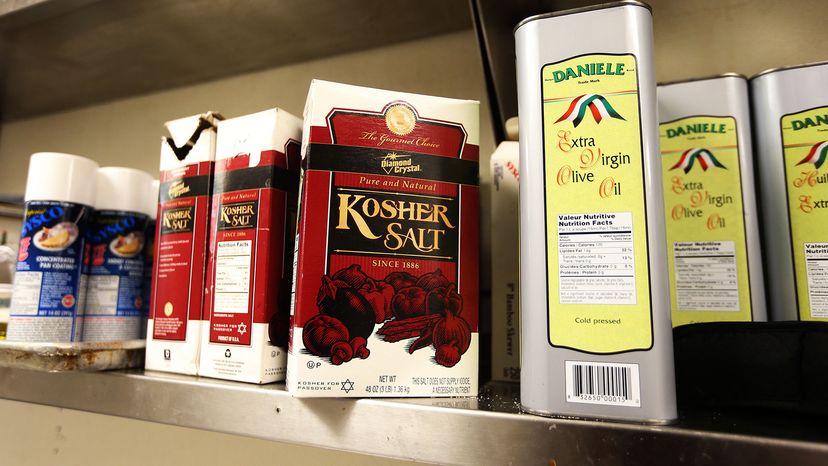 “Chef Thomas Heitz of the restaurant Port, in Pickering, Toronto shows off the ingredients used in cooking beef for his "weck" sandwich, including Kosher salt. Colin McConnell/Toronto Star via Getty Images
“Chef Thomas Heitz of the restaurant Port, in Pickering, Toronto shows off the ingredients used in cooking beef for his "weck" sandwich, including Kosher salt. Colin McConnell/Toronto Star via Getty Images
Salt is perhaps the most-used seasoning in the world. It’s also a food preservative. You may have noticed that many recipes say to use kosher salt rather than regular table salt. But is it really important which one you use?
First, all salt is the same chemically, in that it’s a mineral made of sodium and chlorine. The vast majority of the world’s salt is gathered through mining or by evaporating seawater, and all comes in a crystalline form.
Regular salt, or table salt, is what’s in most salt shakers. It’s usually ground into fine crystals and contains anti-caking additives to prevent it from clumping together. A lot of table salt is iodized, too, which means iodine has been added. In the U.S., the practice of iodizing salt began in the 1920s as an inexpensive and effective means of combating iodine deficiencies, which are common in many spots around the globe.
Kosher salt comes in larger crystals than table salt, and the crystals are flaky and coarse. This makes them great at drawing out moisture from meat. Kosher salt got its name because of a Jewish kosher tradition requiring all meat to have the blood removed before eating. Since this type of salt can do that easily, it became known as kosher salt.
Most kosher salt isn’t iodized, nor does it typically contain anti-caking additives, since the crystals are larger. It’s these larger crystals that make kosher salt favored by chefs, who find it easy to pick up with their fingers and sprinkle over food. Larger crystals are also easier to control, which means less over- and under-salting. Many chefs also feel iodized salt has an off-putting flavor.
If you’re in a jam, you can certainly swap kosher salt for table salt, and vice versa. Just beware of the quantity you’re using, as you can’t substitute one for the other at a 1:1 ratio. Since a teaspoon of table salt is heavier than a teaspoon of kosher salt, due to the difference in grain size, you need to use more kosher salt if you’re swapping it for table salt, or use less table salt if you’re substituting it for kosher salt. (Morton Salt has a handy conversion chart.) One teaspoon of table salt is equivalent to 1 1/4 teaspoons of kosher salt, while 1 teaspoon of kosher salt is equal to 3/4 teaspoon of table salt.
Now That’s Interesting
Pink Himalayan salt is a pricey, upscale salt variety used in food, lamps and spa treatments. Many people think it’s from India, but virtually all of this salt is mined in a hilly region of Pakistan.














































